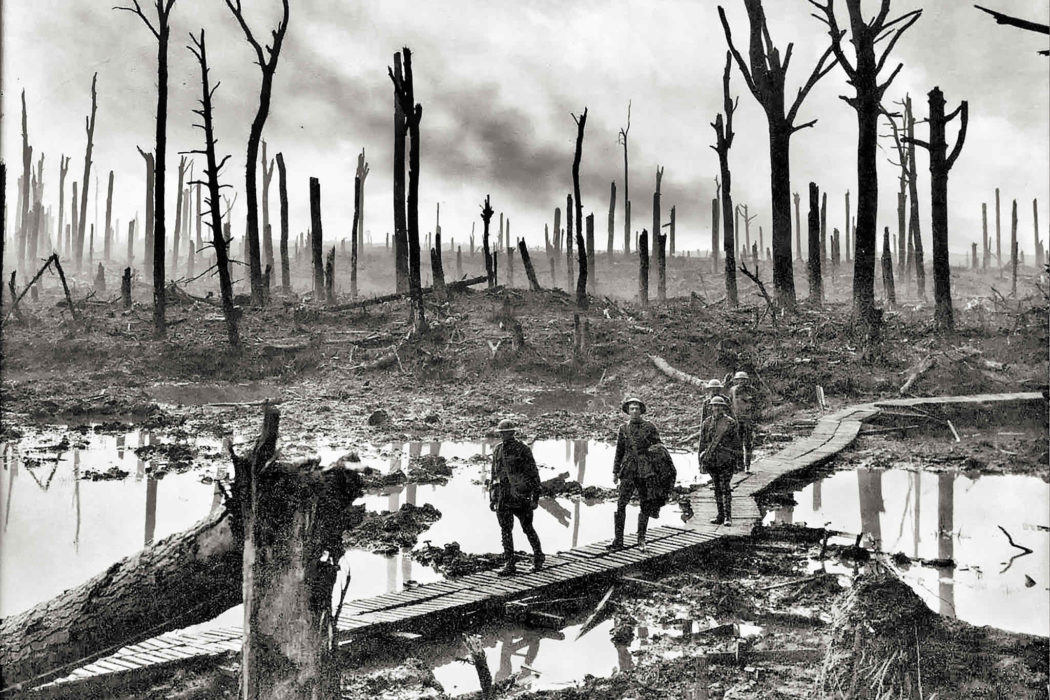“THE HIGHEST PRAISE is due to men who devote their energies to science,” ‘Abdu’l-Bahá said, “and the noblest center is a center wherein the sciences and arts are taught and studied.” He wouldn’t have heard many complaints from the audience he was addressing on the morning of Tuesday, October 8, 1912 — two thousand students and faculty of Stanford University.
They had filled the Assembly Hall just before 10 a.m. and now, at about 10:25, they looked up at the stage from the rows of wooden seats arcing across the floor of the auditorium, and down upon it from behind the filigreed balustrade of the balcony that ringed the space in a semicircle. They awaited the “venerable prophet, with his long gray beard and Persian cloak and turban,” the Palo Altan, a local newspaper, observed.
As ‘Abdu’l-Bahá set out to establish for this educated audience a scientific foundation for peace, there could hardly have been a better embodiment of the combination than the man who had introduced him, and who now sat listening nearby. In addition to being one of the original trustees of the Carnegie Endowment for International Peace, Dr. David Starr Jordan, the President of Stanford University, was America’s leading authority on icthyology, the branch of zoology that deals with the study of fish. It has been said that every practicing icthyologist in the world today can trace his or her professional ancestry back to Jordan’s work and training.

But unlike many natural scientists, who often drew descriptive models of human social interaction from zoology, ‘Abdu’l-Bahá turned instead to the atomic model in physics for his argument. “From the fellowship and commingling of the elemental atoms,” he said, “life results. In their harmony and blending there is ever newness of existence. It is radiance, completeness; it is consummation; it is life itself. Just now the physical energies and natural forces which come under our immediate observation are all at peace.”
Ever since Herbert Spencer had coined the phrase “the survival of the fittest” in 1864, social scientists had used it to craft a normative intellectual basis that defined animalistic aggression as intrinsic to human nature. ‘Abdu’l-Bahá now set out to refute that approach. “If the animals are savage and ferocious,” he told his audience, “it is simply a means for their subsistence and preservation. They are deprived of that degree of intellect which can reason and discriminate between right and wrong, justice and injustice; they are justified in their actions and not responsible.”
On the other hand, humankind possessed a unique capacity for abstract thought, scientific advancement and technological ingenuity, which meant that, “When man is ferocious and cruel toward his fellowman, it is not for subsistence or safety. His motive is selfish advantage and willful wrong.” His point: “From every real standpoint there must and should be peace among all nations.”
Having made his delicate scientific argument, the demeanor of ‘Abdul-Bahá’s words suddenly changed. He turned to a verbal attack on the “delusions” that led to war, and on the tyrants who supported them. “Torrents of precious blood are spilled in defense of these imaginary divisions of our one human habitation, under the delusion of a fancied and limited patriotism.”
“These boundary lines and artificial barriers have been created by despots and conquerors who sought to attain dominion over mankind, thereby engendering patriotic feeling and rousing selfish devotion to merely local standards of government. As a rule they themselves enjoyed luxuries in palaces, surrounded by conditions of ease and affluence, while armies of soldiers, civilians and tillers of the soil fought and died at their command upon the field of battle, shedding their innocent blood for a delusion such as ‘we are Germans,’ ‘our enemies are French,’ etc., when, in reality, all are humankind, all belong to the one family and posterity of Adam, the original father.”

“We live upon this earth for a few days and then rest beneath it forever,” ‘Abdu’l-Bahá declared, as his words rose to a climax. “Shall man fight for the tomb which devours him, for his eternal sepulcher? What ignorance could be greater than this? To fight over his grave, to kill another for his grave! What heedlessness! What a delusion!”
As ‘Abdu’l-Bahá swept a final gaze upon the young faces in the Assembly Hall, many of whom would soon roam the fields of Flanders under a firestorm of bullets and clouds of poison gas, he concluded: “It is my hope that you who are students in this university may never be called upon to fight for the dust of earth which is the tomb and sepulcher of all mankind.”
Sometime later, Dr. David Starr Jordan was asked for his impressions of ‘Abdu’l-Bahá. “He will surely unite the East and the West,” Jordan replied, “for he walks the mystic way with practical feet.”






